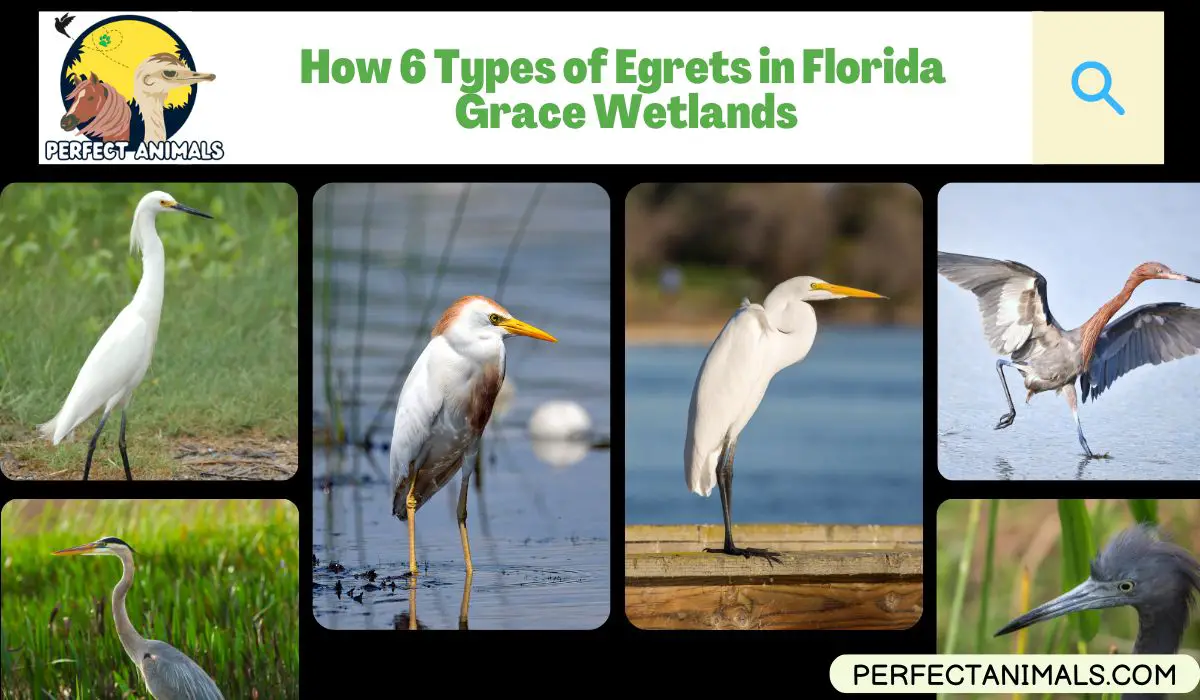With their elegant white plumage and slender builds, egrets are a common sight along shorelines and wetlands throughout Florida.
Several egret species reside in or migrate through the Sunshine State, attracted by an abundance of streams, marshes, and estuaries that provide ideal habitats.
In this article, we’ll explore the different types of egrets in Florida and what makes each unique.
From the flashy breeding plumes of the reddish egret to the stark whiteness of the snowy egret set against blue coastal skies, Florida offers prime egret viewing opportunities.
We’ll discuss key identification features, behavior, conservation status, and the best places to add these long-legged wading birds to your life list.
You’re sure to enjoy learning more about beautiful egrets in Florida. So keep reading!
Types of Egrets in Florida
Cattle Egret
The cattle egret is the smallest egret species in Florida, standing just over a foot tall with a wingspan of three feet.
These sociable birds are named for their habit of following domestic livestock, feeding on insects roused from the grass.
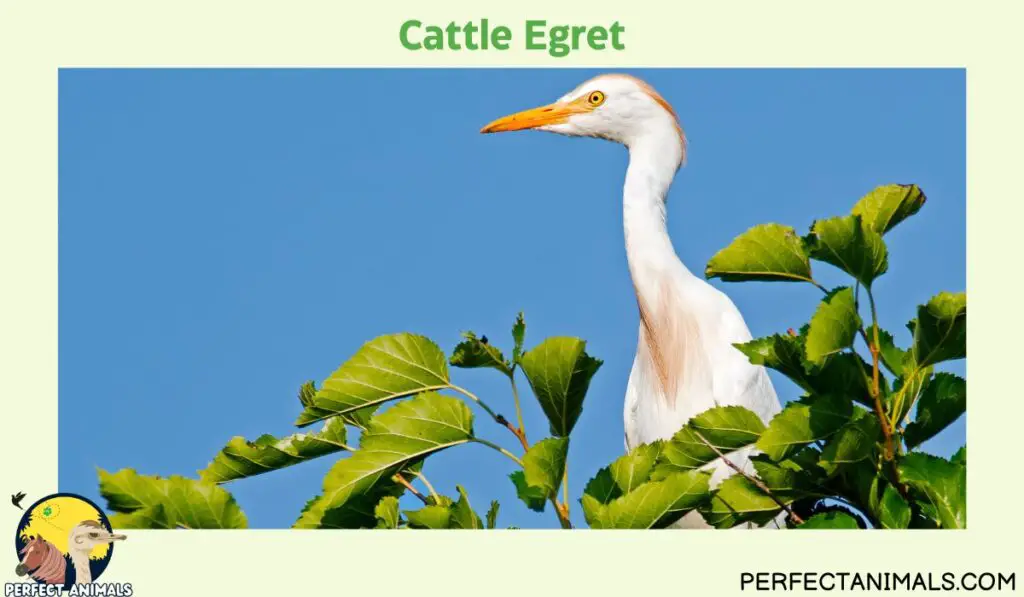
In Florida, look for cattle egrets shadowing cattle in pastures or traversing wet fields.
They have compact plumes that extend during the breeding season, plus facial skin that ranges from yellow to red to gray.
Their stout black bill sets them apart from other white egrets.
Though the cattle egret population faced declines due to pesticide use, it has rebounded.
These adaptable birds often wander away from marshes to forage in grasslands and urban areas.
You May Also Like – Discover 12 Crabs in Florida
Great Egret
The quintessential white heron, the great egret stands at three feet tall with bright yellow facial skin.
A black bill contrasts smartly with its fully white plumage and the dramatic greenish-black legs add to its elegance.
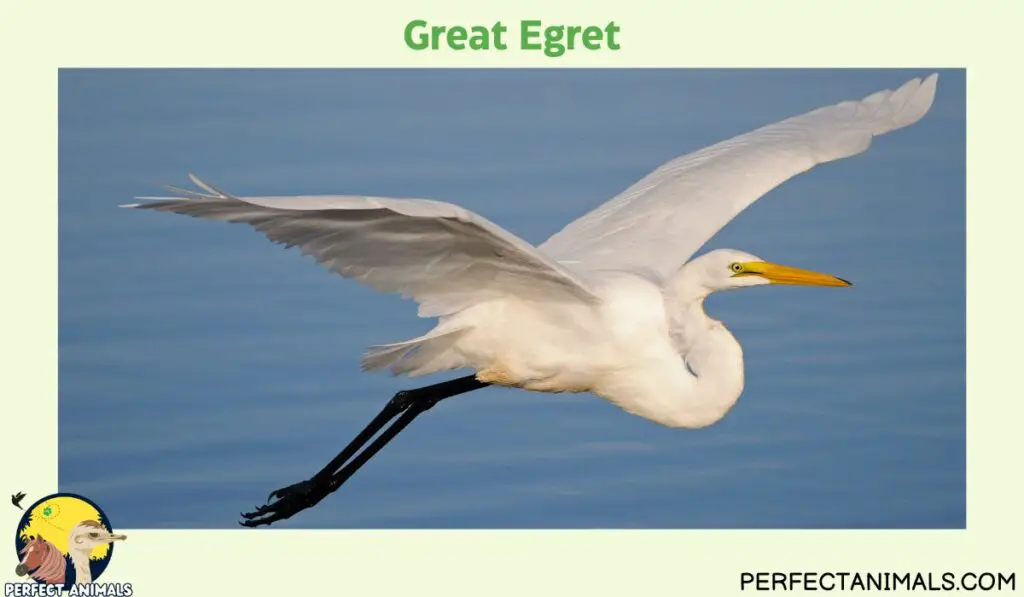
Great egrets breed in colonies, building stick platform nests high in shrubs and trees that overlook waters rich in catfish, frogs, small reptiles, and more.
They’re a fairly common sight along Florida’s diverse aquatic ecosystems and coastlines.
When threatened, these stately birds emit a deep croaking call.
During breeding season, long filmy plumes extend from their backs.
The great egret’s conservation success story shows that wetland protections truly aid waterbirds.
Snowy Egret
The snowy egret displays all-white plumage that brilliantly offsets its black legs and bill, with vibrant yellow facial skin peeking out during the breeding season.
Weighing just over one pound with a slim wingspan of three feet, these small herons are common sights along Florida estuaries and saltwater bays.
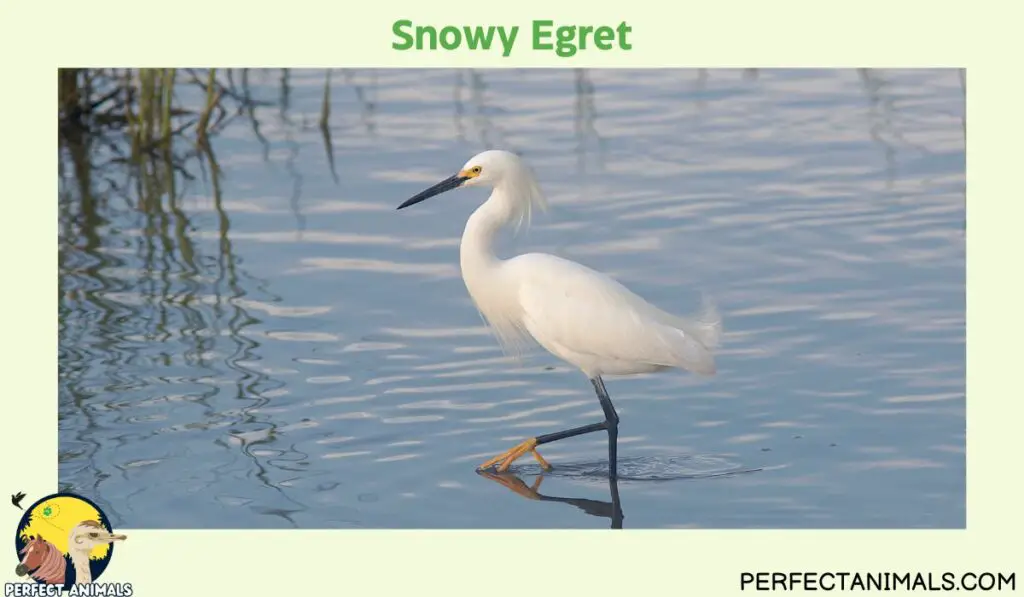
An agile flier, the snowy plunges its head underwater to jab prey with its long pointy bill.
Snowy egrets once faced hunting pressure for showy decorative plumes, but conservation measures like the Migratory Bird Treaty Act allowed populations to rebound.
These active foragers even venture onto lawns or agricultural fields at times.
Their golden slippers disappearing dance displays prove egrets have an elegance to spare.
Related Article – Top 10 Birds With Long Beaks
Reddish Egret
The reddish egret is a standout among white herons with its distinctive rusty-red plumage around the neck and shoulders.
Two color morphs exist – the less common blue-gray phase and the bright “pink” phase, named for the rosy mahogany hue.
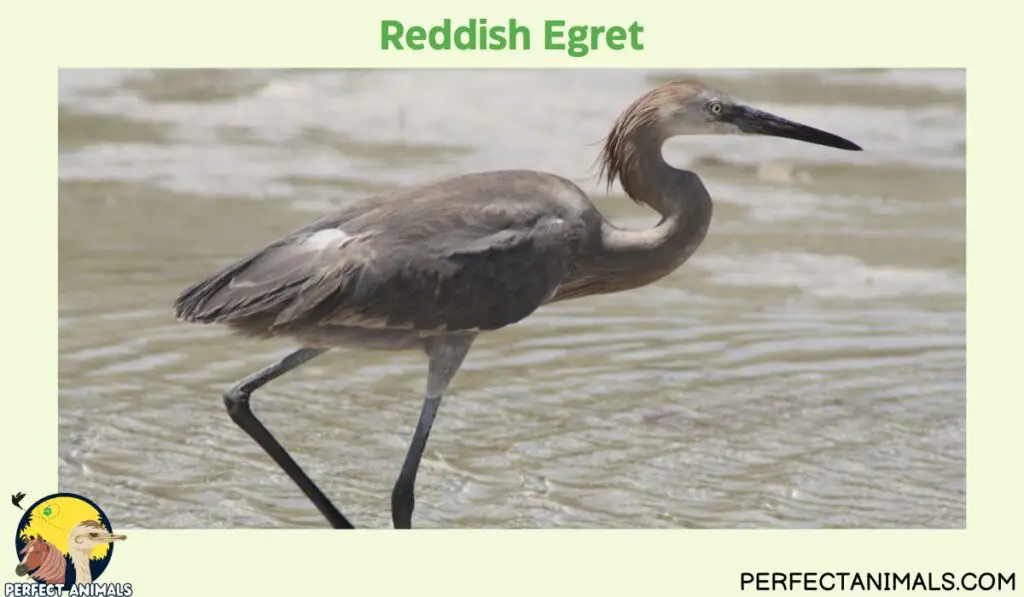
This pop of color makes this two-foot-tall egret easy to identify.
With red legs matching its neck feathers and a blue-gray bill tipped in black, it’s a sight to behold in good lighting.
Unlike most other herons, the reddish egret forages actively, with rough wings open to form a canopy that spots prey.
Its agile wings allow it to glide low across shallow salt marshes to snatch fish and frogs.
Pairing an acrobatic flight display with bold plumage wins over mates.
Though some habitat loss threatens localized breeding pockets along Florida’s coasts, it remains a least concern species.
Related Article – 10 Amazing Birds With Long Legs
Great Blue Heron
As the largest heron in North America, the great blue heron is a towering sight with blue-gray plumage, a wingspan stretching six feet wide, and standing nearly five feet tall.
The silvery-white crown and cheek contrast its otherwise dark colors.
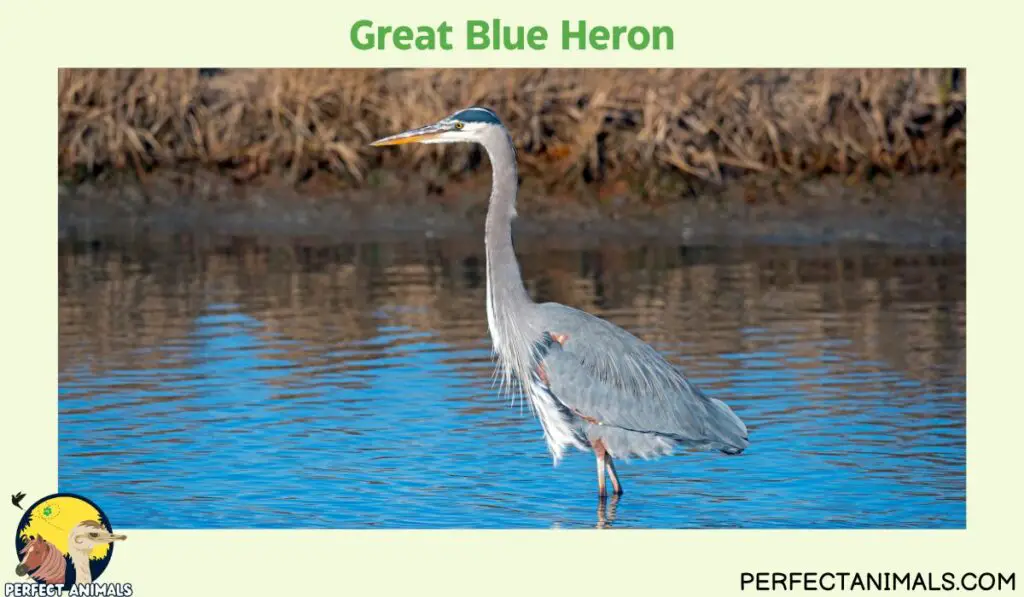
Spectacular in flight, these birds slowly beat their wings on long shallow arcs.
Solitary and patient, great blue herons stalk saltwater and freshwater grounds using pinch-grip skills to catch fish.
Widespread in wetlands across Florida, they nest colonially as well, building massive stick nests high treetops must hold adults plus chicks weighing up to 10 pounds at maturity!
Once threatened by plume hunters and pesticides like its relatives, great blue heron numbers stabilized with 20th-century environmental protections.
Related Article – 12 Clever Birds That Eat Spiders
Slaty Egret
The slaty egret is the most elusive heron in the United States, listed as federally threatened due to its limited breeding range concentrated along coastal southwest Florida and the Everglades.
True to its name, this medium-sized wader has a unique blue-gray with plum-purple sheen coloring.
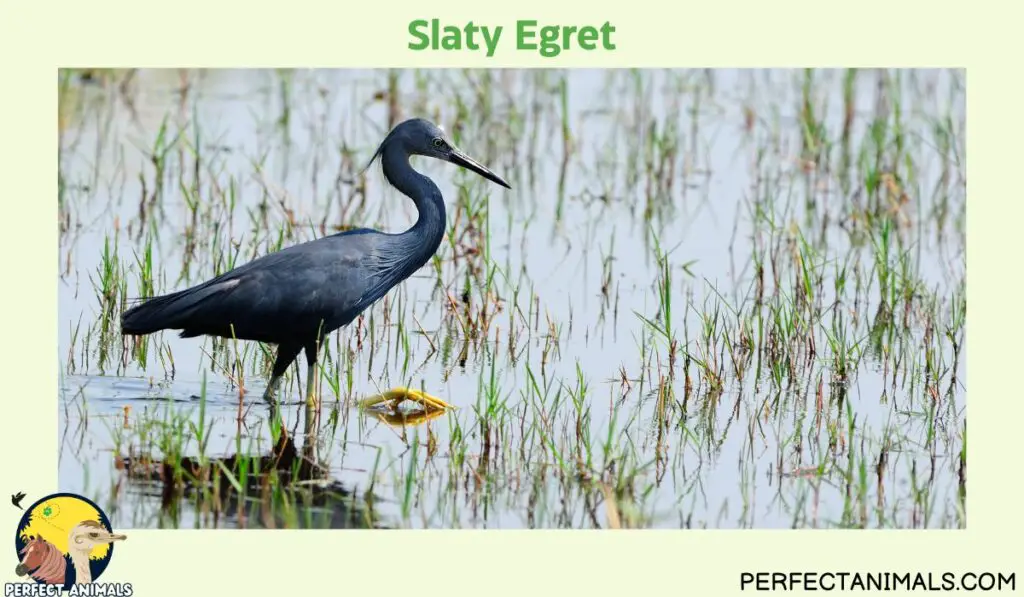
Contrasting its bright yellow mouth, the bill is bicolored – pink at the base fading to blue then black at the tip.
The slaty forages slowly and patiently in shallow estuary flats of protected bays and lagoons, waiting to strike small fish.
Conservation efforts aim to protect fragile breeding wetlands since much of their habitat faces development pressure and degradation.
Avid birders travel to admire the little-seen slaty egret in breeding season when it’s fanning, trailing head plumes intensify its already striking appearance.
Sightings prove encountering a rare bird is its reward.
You May Also Like – 10 Eye-catching Birds With Red Heads
Final Thoughts
Egrets remain enduring symbols of subtle beauty along Florida’s ecologically rich coastlines and wetlands.
Their graceful forms and plumed breeding finery have captured the human imagination for ages.
Once threatened by hunting and habitat loss, protective measures allowed egret numbers to rebound across most of the state.
Great egrets, snowy egrets, and others once again thrive in their essential estuarine and freshwater niches.
While major conservation successes safeguarded numerous herons, continued wildlife habitat protections are still needed for Florida’s rarest breeding birds like the elusive slaty egret.
As development pressures persist, preserving vulnerable estuaries and rookery sites remains vital so new generations of egrets can continue fishing the shallows.
Their beauty and resilience remind us of nature’s power to recover when given the chance.
By responsibly appreciating egrets and defending their homes, Florida’s ecosystems and human communities mutually flourish.
Resources – (for further reading)
Wikipedia – Cattle egret | Great egret
All About Birds – Snowy Egret Identification | Reddish Egret Identification
National Geographic – Great Blue Heron
eBird – Slaty Egret Egretta vinaceigula

Brittney , a devoted exotic pet enthusiast, showcases her profound passion for the animals through her role as a veterinary technician. With a strong background in caring for a diverse array of animals, she shares her expertise by crafting engaging articles about exotic pets for our blog.

